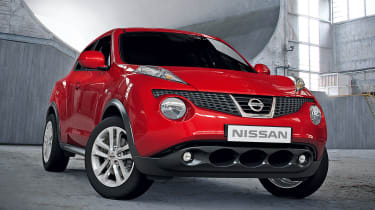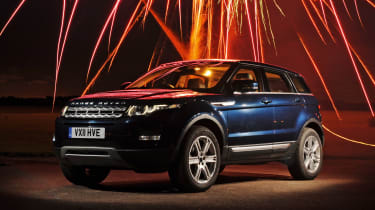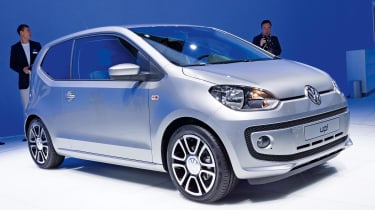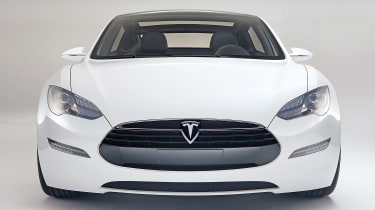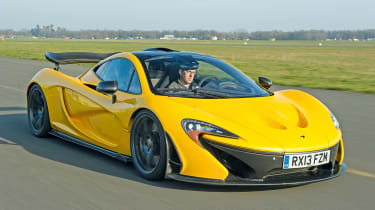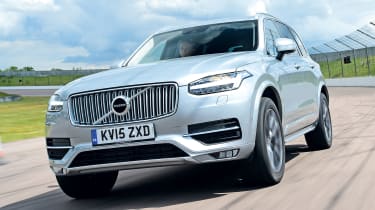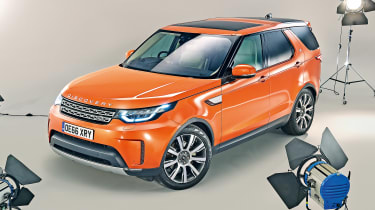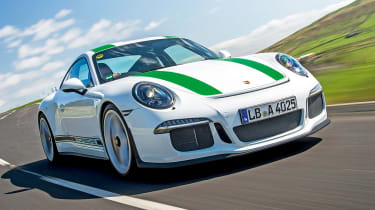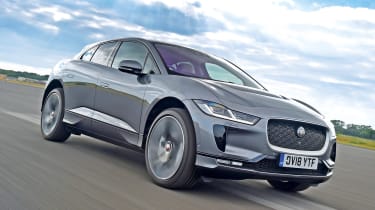The best cars of the 2010s
We round-up the best cars from 2010 to the present day
2010: Nissan Juke
Having had a hit with Qashqai in the family car market, Nissan quickly decided that it could adopt a similarly radical approach with a smaller crossover. The Juke pushed the boundaries further, with polarising styling, particularly around the front end and the rear haunches.
There was method in the madness, though. The cabin was more conventional because, Nissan had worked out, people wanted to be seen in something looking funky, but didn’t necessarily want to have to live with the quirkiness when behind the wheel. Sure enough, the Marmite looks did find followers who wanted something different from yet another Fiesta, Micra or Polo.
• Subscribe to Auto Express now and get 6 issues for £1
This success is the reason why, seven years on, we’re still waiting for a replacement and wondering whether it’ll be evolutionary or revolutionary.
2011: Range Rover Evoque
When Land Rover showed the daring LRX three-door concept at 2008’s Detroit Motor Show, it marked a huge departure for the famous off-roader brand. But when the production version arrived, carrying Range Rover badges, less than three years later, the world seemed ready for a small, premium SUV.
So much so, in fact, that it was our overall Car of the Year in 2011; we loved its mix of chunky, sophisticated looks, a premium cabin and authentic ability to go anywhere (even though most owners have never used the last of those traits). The transformation from concept to production car was a triumph of design and engineering, with the show car’s looks making it through pretty much unscathed.
The Evoque has been a colossal success story ever since, with current demand still at record levels, despite the fact that a new generation of the car is likely to appear within the next year.
2011: Volkswagen Up! 2011
Before 2011, city cars tended to be fairly basic and cheap transport, without much of a sense of fun or really appealing driving dynamics. But the Volkswagen up! changed all that.
The up! was engineered and developed as part of a project that also delivered the SEAT Mii and the Skoda Citigo. But while its sister cars had many of the same mechanical qualities – superb ride comfort, beautifully judged steering and gearshift, plus impressive refinement – neither could quite match the VW’s upmarket finish and funky style.
Ironically, the up! project is not considered a roaring success within Volkswagen itself, not least because plans to expand it to become a truly global model never quite materialised. But with low running costs and, most recently, a face-lift that brought turbocharging to the range, in reality it’s all the car that many people ever really need.
2012: Tesla Model S
Arguably the car that altered the face of electromobility, the Tesla Model S was a true game-changer. It wasn’t the first electric car, but was ground-breaking; it arrived in the UK in 2014 with a true 300-mile range, space for four adults and a marvellous 17-inch touchscreen infotainment system.
The firm’s Supercharger network cemented the car’s pioneering position, offering owners incredibly quick charging across popular routes throughout the UK.
Despite struggles under leader Elon Musk, Tesla launched the Model X SUV, with the Model 3 hatch due here in 2019. Pick-up trucks and lorries are on the way.
My pick: Steve Fowler, Editor-in-chief (2011-present)
“Who knows where Tesla will be in 10 years? But the Model S will always be the first EV poster child.”
2013: McLaren P1
A spiritual successor to the legendary F1, the hybrid-powered P1 was the culmination of a tireless engineering mission undertaken by McLaren.
The £886,000, 903bhp petrol-electric hypercar defied all expectation when it arrived in 2013, with the results as astounding as the numbers would suggest. As usable as it was terrifying, the P1 completely rewrote the rulebook.
When guest tester Jay Leno drove the car for Auto Express in September of that year, he described the P1 as an “incredible car” and one that offered an experience “you’ll struggle to find anywhere else”.
But the P1 wasn’t alone. It appeared alongside a pair of equally bonkers competitors: the Ferrari LaFerrari and Porsche 918 Spyder. While a true group test verdict was out of the question, the trio instantly cemented its place in a golden era of new-age hypercars.
2014: Volvo XC90
The second-generation XC90 heralded a totally new and hugely successful era for Volvo.
With the days of the boxy estate behind it, the Swedish manufacturer used the new SUV to debut a fresh design language. It’s a form that has since made its way on to everything from the XC40 crossover to the S90 saloon, as well as everything in between.
But the revolution was more than skin deep. The XC90 saw the introduction of Volvo’s new SPA platform: a scalable product architecture that would go on to underpin and support all of the brand’s 60 and 90-series cars.
The technology was designed with electrification in mind from the outset, too, and is the reason Volvo is now a key player in the highly competitive market for low-emission saloons and SUVs.
2015: Jaguar F-Pace
Although it’s a former Auto Express Car of the Year and World Car of the Year, the Jaguar F-Pace isn’t quite the greatest model of the third of a century just gone.
But in terms of building the brand, restoring confidence in it, demonstrating its flexibility, and underlining the company’s position as a designer of some of the finest-looking cars on the planet, the F-Pace is – and will be – hugely significant.
It’s the company’s best ever product for the real world. And lease deals at £100 a week or outright purchase from a tad over £40,000 are not unreasonable.
My pick: Mike Rutherford, Founding member (1988-present)
“With the F-Pace, Jaguar gained membership of the premium league”
2016: Land Rover Discovery
It must be a truly painful process to rethink Land Rovers; they have such a sharply defined mission brief, and a diehard fan following, that it’s nigh on impossible to improve in any area without introducing compromises elsewhere. But with the fifth generation of the Discovery, the team at Land Rover managed it and then some.
The Mk5 Disco is a triumph of packaging, interior functionality and quality, refinement and on-road ability – and all the while, you know that beneath you is the sort of off-road prowess that few other brands can even aspire to match.
You feel like you’re the king of the road when you’re driving the Discovery – just as owners have come to expect in the 30 years since the first edition, in fact.
2017: Porsche 911 R
Porsche’s GT department has scored smash hits with virtually every model in recent years, but even by these standards, the 911 R is a bit special. In effect it’s a 991 GT3 body shell and suspension, with the GT3 RS’s 4.0-litre flat-six engine, producing 493bhp fashion. It gets a six-speed manual gearbox, too.
The end product of these ingredients is one of the best driver’s cars you can buy. It stands apart from the GT3 and the hard-core GT3 RS models, delivering classic 911 traits in an ultra-capable package. And the normally- aspirated engine is a peach – made all the more enjoyable (and louder) by the loss of a bit of sound deadening.
Our biggest gripe the model? The limited production run. Cars this good shouldn’t become unavailable so quickly.
My pick: Sean Carson, Road tester (2015-present)
“We’d waited so long for a manual 991 GT3 variant; the R delivered. The gearbox unlocks driving nirvana. It’s wonderful.”
2018: Jaguar I-Pace
Tesla stole a march on the whole car industry with its Model S, Model X and Model 3, but the first sign of a fightback from the established premium brands is a stunner.
The Jaguar I-Pace manages to mix cutting-edge technology, a usable real-world range, fast charging and a practical interior. And crucially, it does all of this while still driving like a Jaguar, with agility and involvement to match the jaw-dropping pure-EV performance.
It’s so good that given the right (empty) stretch of road, you’ll be enjoying yourself so much that you’ll forget it’s an electric car. And that’s perhaps the biggest achievement of all.
The I-Pace impressed us so much that we’ve made it our 2018 Car of the Year – the first all-electric vehicle to win the award.
My pick: Jonathan Burn, News editor (2013-present)
“Being the first to market wouldn’t matter if the I-Pace didn’t feel great to drive. But it’s as good as any Jag.”
2019: Tesla Model 3
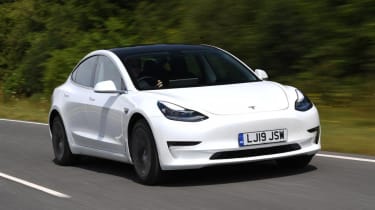
After Elon Musk exclusively revealed Tesla’s smallest and cheapest car to Auto Express in 2015, there was a long wait until we could have a go in the American manufacturer’s ‘affordable’ EV and it proved to be worth the wait.
The Model 3 is available in three forms. The cheapest is Standard Range with a 254-mile range and a 0-60mph time of 5.3 seconds, next up is the Long Range, which unsurprisingly comes with the longest range at 348 miles and a 0-60mph time of 4.4 seconds. The Performance version tops the line-up at £52,000, but for that you get an impressive 329-mile range and a supercar-beating 0-60mph time of 3.2 seconds. Meaning this comfortable family hatchback will easily out accelerate a McLaren 540C.
As ever with Tesla there’s plenty of tech on board to keep you entertained - this is especially true when you’re playing with the built-in Tesla Arcade games. The ‘Autopilot’ autonomous system is the most advanced and intuitive currently available and is deeply impressive in its own right.
Steve Fowler, Editor-in-chief (2011-present)
"It’s a car that drives brilliantly, looks great and is full of the most advanced tech."
30 years of motoring: the big stories from 2010 to date
2010 – All-electric Nissan Leaf launches when EVs are still rare. It’s now the world’s biggest-selling electric model.
2010 – Chinese firm Geely completes a deal to buy Swedish brand Volvo from Ford, completing the break-up of the American company’s Premier Automotive Group, which also included Jaguar, Land Rover and Aston Martin at one time.
2012 – Saab stops making cars after filing for bankruptcy.
2013 – BMW launches the i3. Conceived as a ‘Megacity vehicle’, the new EV and range-extender uses innovative construction techniques to keep down weight, including carbon fibre-reinforced plastics.
2014 – Electronic Stability Program becomes compulsory in the European Union. It improves stability by detecting and reducing a loss of traction.
2015 – VW is plunged into turmoil when it emerges that it has fitted a ‘defeat device’ to certain vehicles in the US to bypass emissions tests. ‘Dieselgate’ becomes common parlance and sales of diesel cars start to slide.
2017 – In a bid to balance its books, General Motors sells off its European division – including Opel and Vauxhall – to the PSA Group, which manufactures Peugeot, Citroen and DS models
2018 – Auto Express magazine celebrates its 30th anniversary with the 1,543rd issue.
The 30 best cars of the last 30 years
• Introduction• The best cars of the 1990s• The best cars of the 2000s• The best cars of the 2010s• Cars of the future: what's next...
Find a car with the experts

